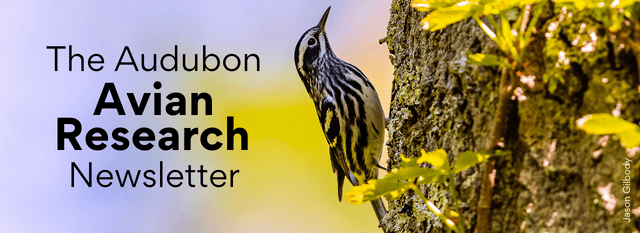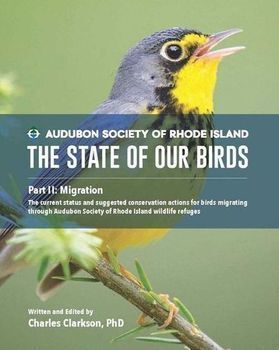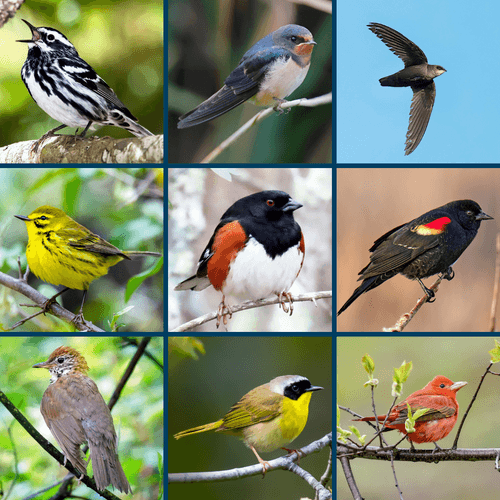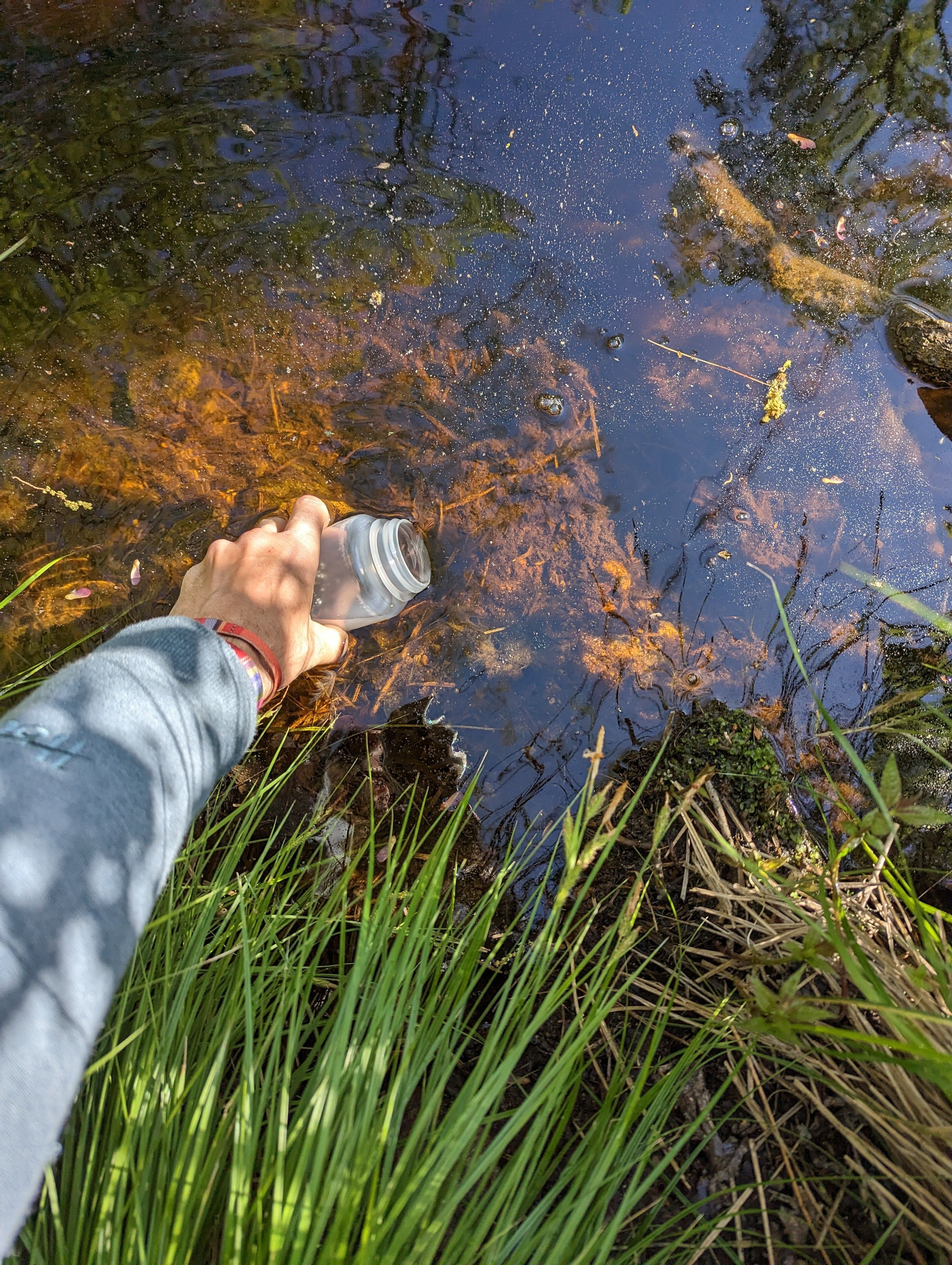
May 2023
Sign up to get the Audubon Avian Research Newsletter in your email inbox!
As we begin the second year of breeding season data collection across our refuges, there is a great deal of progress to celebrate already, including the production of the first-ever “State of Our Birds” report in January of 2023. Since the inception of Audubon’s Avian Research Initiative, we have engaged in a number of projects across our refuges and this breeding season, we will be collecting additional data on our refuges and the birds that occupy them. Here are some highlights from the Avian Research Initiative.
The Release of “The State of Our Birds, Part 2”
The second part of the “State of Our Birds” report focuses on the timing of passage and the turnover in avian communities during periods of spring and fall migration. When, on average, certain species move through our state, how long individuals stay to refuel on our refuges and the capacity of our refuges to provide essential resources to birds undergoing both long- and short-distance migration is critical information to amass. Although the report covers only a single year of migration, it begins to establish these metrics and identify gaps in our understanding that can be filled in subsequent years of study. The report serves as a snapshot of avian migratory behavior and, as with all aspects of nature, in order to capture the variability that occurs in our habitats and their use by birds within and between years, we will plan to continue collecting data every year until we have a detailed understanding of how birds use our refuges in an “average” year and what needs to be done to meet the unique demands of the warblers, flycatchers, thrushes, blackbirds, tanagers and others that pass through our state.
I invite you to download and read the second part of our report, keeping in mind that the data contained therein are just the beginning of a long but essential period of data collection. The full-annual cycle of a bird is taxing and involves as tremendous amount of energy expenditure. It is our goal to ensure that when choosing to nest, overwinter or migrate through our properties, birds are always able to meet and exceed those energetic costs. Audubon properties should serve as a lifeline for all birds, all the time.
Responsibility Bird Monitoring
At the end of this breeding season, we will have enough data to begin creating detailed management plans for species based on their population size, habitat preferences and sensitivity to forest fragmentation. Look for the release of technical reports and addendums to our current reports by mid- to late-fall 2023.
There is still time to contribute to data collection! If you are (or someone you know is) interested in assisting with data collection, please reach out to the director of avian research (cclarkson@asri.org) to get a copy of the “Responsibility Bird Monitoring Training Manual” and begin contributing your data!
Neonicotinoid Analysis
MOTUS Tower Installation
On Tuesday, 25 April, the long-awaited MOTUS tower was installed at the Audubon Nature Center and Aquarium in Bristol (see the images below!) The tower, which is part of a growing international wildlife tracking network, will enable us to determine which species pass overhead during periods of migration, adding to the collective data on the migratory behavior of birds, bats and insects. The MOTUS network (MOTUS.org) represents a large collaborative effort by multiple international organizations to utilize automated radio telemetry to track individuals of over 300 species of wildlife as they undergo both long- and short-distance movements. MOTUS towers and associated wildlife tags are found in 34 countries where over 38,000 individual animals have been tagged. The Audubon Society of Rhode Island is now yet another collaborator in this international project to better understand the movements of animals (along with close to 2,000 partner organizations).
The technology behind the MOTUS network is conceptually straightforward. Individuals (birds, bats or insects) are fitted with small radiotransmitter tags, which transmit a signal on a particular frequency (166.38 Mhz). An array of automated receiver stations (MOTUS towers) are scattered across the landscape and are all programmed to monitor this frequency. Individuals passing within 10 miles (under ideal conditions) are detected by the towers and, when combined with detections across multiple additional towers, provide data on timing of movement and routes taken. Our MOTUS tower is the third tower on the mainland of Rhode Island and helps to fill a gap in coverage within the eastern portion of the state.
The tower and the detections it has made can be viewed using the following link:
https://motus.org/data/receiverDeployment?id=9661
The real strength of the MOTUS tower is the capacity to thrust the Audubon Society of Rhode Island into the collaborative and multidisciplinary work being done across the globe to increase our understanding of avian migration. Soon, an interactive display explaining the tower, its operation and the data it collects will be installed at the Nature Center and we invite you to visit the site and learn about this important collaboration.
Below are some images from installation day.
Click to enlarge images and use the navigation arrows below.




















